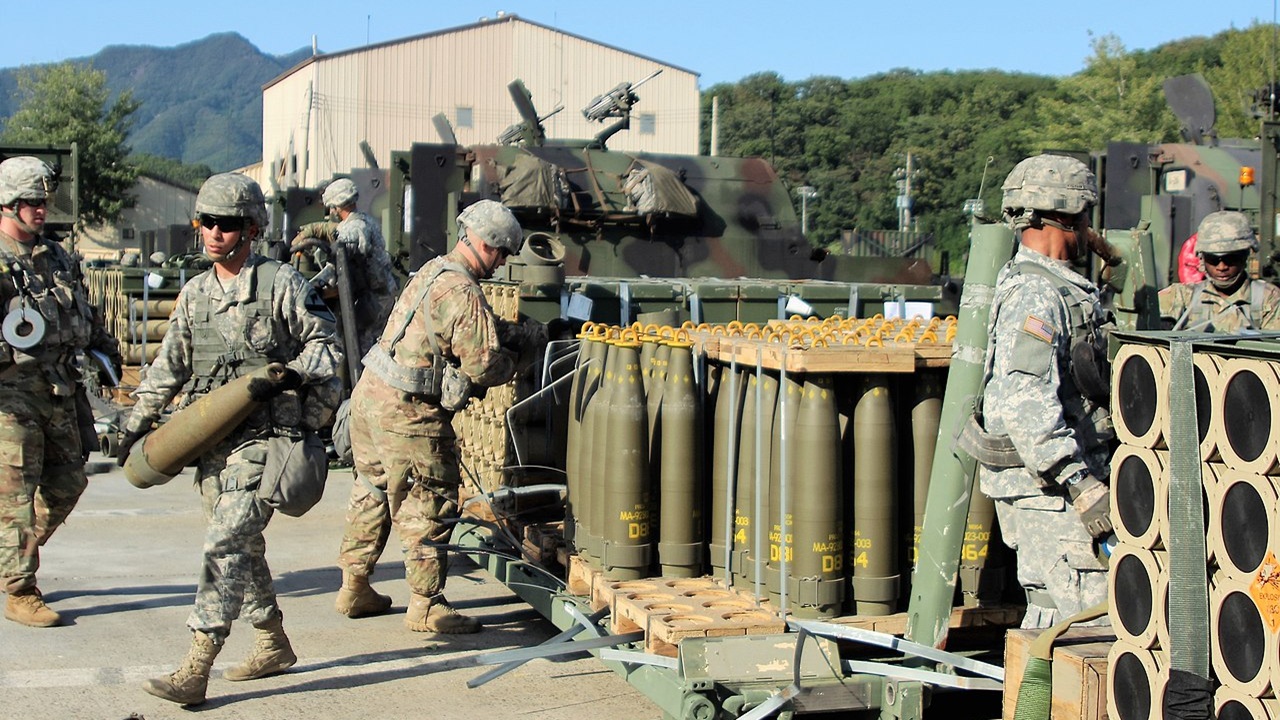The US military has significantly increased its production of artillery shells, nearly quadrupling the monthly output of the 155mm M795 projectile since 2022. This surge in manufacturing comes in response to the ongoing conflict in Ukraine, where both Russian and Ukrainian forces have relied heavily on artillery in their engagements.
Military planners globally are closely analyzing the war in Ukraine, recognizing it as one of the most extensive conflicts since the end of the Cold War. This conflict has not only tested various military technologies, such as drones and loitering munitions, but has also exposed the vulnerabilities of traditional platforms like tanks. In this context, artillery has emerged as a critical asset, with both sides launching artillery barrages that exceed current production capabilities.
The demand for artillery shells has strained US stockpiles, compelling the US Army to take action. The Iowa Army Ammunition Plant in Des Moines County, Iowa, produces the essential 155mm rounds used in the M777 howitzer. This facility is part of the US Army Joint Munitions Command and is currently operated by American Ordnance, LLC. In addition, General Dynamics has established a facility in Mesquite, Texas, dedicated to manufacturing shell casings, while the Scranton Army Ammunition Plant in Pennsylvania also contributes to 155mm artillery shell production.
New Production Facility Set to Enhance Output
In a recent announcement, the Rock Island Arsenal in Illinois revealed that the Army has significantly increased its monthly production capacity. The facility aims to enhance readiness and respond to global demands while integrating lessons learned from current conflicts.
In April 2023, the Munitions Readiness Directorate at the Army Contracting Command awarded a $44.9 million contract to General Dynamics Ordnance and Tactical Systems for the construction of a new load, assembly, and packing plant in Camden, Arkansas. The site, which began preliminary construction activities in spring 2023, will focus on the final stages of artillery shell production, ensuring that the metal bodies of the 155mm projectiles are filled with explosives, assembled, and packed for shipment.
Corey Schaefer, a contract specialist at the Munitions Readiness Directorate, highlighted the importance of this integrated master schedule for tracking the progress of the new facility. He noted that the plan includes all critical paths and necessary equipment orders, allowing for updates as developments unfold.
Aiming for Increased Capacity
The Camden facility is expected to significantly boost the production of 155mm projectiles, with plans for General Dynamics to manufacture up to 50,000 completed projectiles per month. This increase is part of a broader goal for the US Army to reach a total production target of 100,000 shells.
To achieve this ambitious target, the Army plans to deploy advanced automation, digital quality tracking systems, and environmentally conscious processes at the facility. This approach may lead to a leaner workforce, reflecting the evolving nature of assembly line production. Ensuring that the military’s stockpiles of critical ordnance are replenished remains a priority.
The ongoing production efforts underscore the US military’s commitment to maintaining its readiness and support for allies in conflict zones. As the global landscape continues to shift, the focus on artillery production illustrates the enduring relevance of traditional military capabilities in modern warfare.
With developments in production facilities and advancements in manufacturing processes, the US Army is positioning itself to meet the increasing demands of a changing battlefield.
